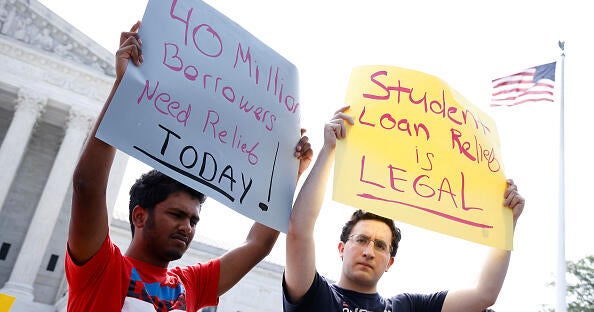Student loan collections resume as record number of borrowers fall behind on payments

Millions of student loan borrowers are facing a wake-up call as the Department of Education resumes collecting on school loans. This comes as delinquency rates among people with student debt are at an all-time high, according to recent analysis.
After nearly five years since the U.S. government first paused federal student loan payments and interest accrual as a temporary relief measure during the COVID-19 pandemic, May 5 marks the first day the Education Department’s Office of Federal Student Aid (FSA) restarts collections on defaulted federal student loans. Referrals for collection had been on hold since March 2020 due to the pandemic.
Michele Raneri, vice president and head of research at TransUnion, highlighted the concerns surrounding borrowers who have not paid their federal student loans. Reasons for non-payment may include financial capacity, lack of awareness about repayment requirements, difficulty finding information on repayment options, or unwillingness to pay.
A recent analysis by TransUnion revealed that one in five borrowers is “seriously delinquent” or has a past-due payment of 90 days or more. This surpasses previous records, indicating a significant increase in the number of borrowers at risk of default.
Defaulting on a student loan can have serious consequences, including wage garnishment, withholding of Social Security benefits and tax refunds, and a negative impact on credit scores. The analysis by TransUnion showed that borrowers who faced default experienced an average credit score drop of 63 points, with those in the “super prime” credit category seeing a decline of 175 points.
To address the rising default rates, Pew Charitable Trusts recommends prioritizing income-driven repayment plans, enhancing borrower outreach, and utilizing automation to enroll borrowers in affordable payment plans. These measures could help reduce the risk of defaults and support borrowers in managing their student loan debt effectively.
The Education Department reports that nearly 5 million borrowers have not made a monthly payment in over 360 days, while only 38% are on track with their repayment plans. With a collective student loan debt of $1.6 trillion among nearly 43 million borrowers, the need for effective debt management strategies is more crucial than ever.
Secretary of Education Linda McMahon emphasized the importance of resuming student loan collections, stating that American taxpayers should not bear the burden of irresponsible student loan policies. While efforts to provide student loan debt relief have faced challenges, the return to collecting repayments signifies a step towards addressing the growing issue of student loan defaults.
In conclusion, as student loan collections resume, borrowers are urged to explore repayment options, seek assistance from loan servicers, and stay informed about managing their student loan debt effectively. By taking proactive steps to address repayment challenges, borrowers can navigate the complexities of student loan debt and work towards financial stability.





